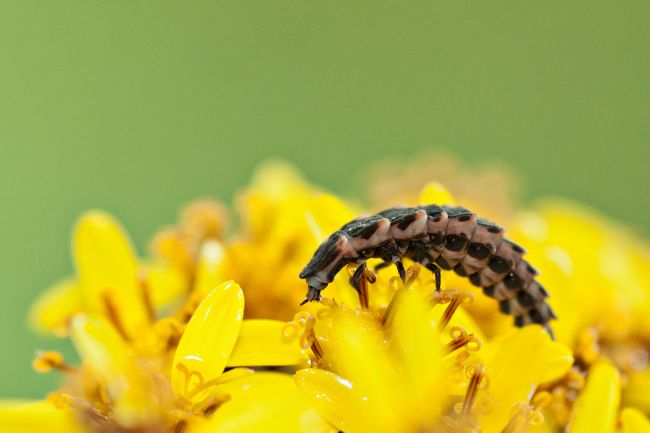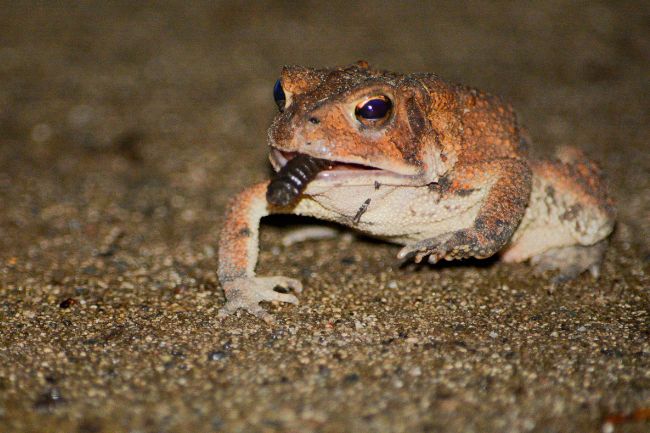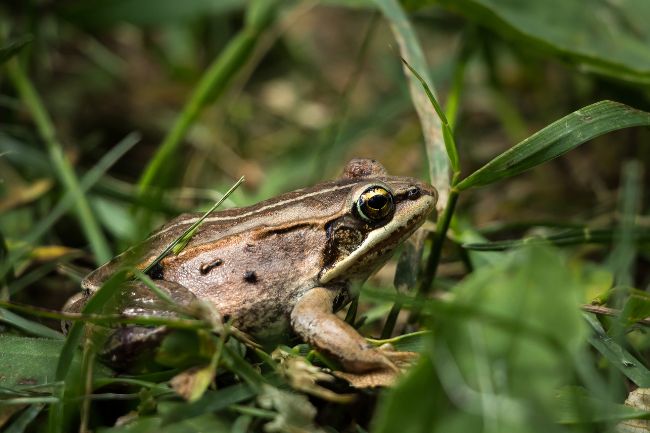Frogs do eat some kinds of worms, though the term is also used for many species they do not eat.
What is a Worm?
The term ‘worm’ is not a scientifically specific one, and is used for a wide variety of species. For many people the word is most familiarly associated with annelid species, such as earthworms, however it is also used in the names of insects, reptiles and amphibians species.
Annelids
Annelids are invertebrates with long thin bodies, made up of many segments, and include earthworms and leeches. Most live beneath the ground or in organic matter such as leaf litter.

Earthworms are particularly important for soil health, as they break up organic matter into soil, making minerals and nutrients more accessible to plants.
The Giant Gippsland earthworm (Megascolides australis) is the largest earthworm on record, being 1m (39,37 inches) long. By comparison the smallest annelid is Chaetogaster annandalai, which is only 0.5mm (0,019 inches) in length.
Insects
Many insects start life in a grub-like form. As juveniles they often have long segmented bodies, with legs that are either absent or not immediately obvious.
For this reason many have been given the name ‘worm’. Examples include mealworms, which become a type of darkling beetle when they mature, silkworms, which metamorphosis into a silk moth, and glowworms, which become glowworm beetles.

Sometimes a number of insect species are even grouped together, such as ‘woodworm’, a word which is collectively used for the wood boring larvae of a variety of species.
Reptiles
Slowworms are a type of legless lizard, with a long, scaled body. Due to their shape, and their habit of hiding under rocks and other objects, many people mistake them for a type of worm.
Amphibians
Caecilians are worm-like amphibians that tend to live in the soil or water. Seeing one in its natural environment you’d be forgiven for thinking it was a type of earthworm, but in many ways these animals are more like snakes than worms.

The largest species can be up to 1.5m (59 inches) in length, and some even possess a poisonous bite, or secret toxins through their skin to put off predators.
Other Worms
The term ‘worm’ is often applied to anything long and thin, particularly if it lacks other obvious features. Many marine species are given the title ‘worm’ without being closely related. Examples include flatworms, nematodes and horseshoe worms.
Also read: Earthworms Front and a Back End Explained (Difference)
Do Frogs Eat Worms?
Now we know how widely the term ‘worm’ is used, it’s unsurprising that the answer to whether frogs eat worms is sometimes. There are a number of factors that will affect whether a frog is likely to attempt to eat a certain type of worm.
Size
Frogs range massively in size, from the diminutive poison dart frogs, to the massive African bullfrog. One thing they all have in common is that they don’t chew their food.
Although most frogs have teeth, these are used to grip prey, rather than munch them up. Prey are therefore swallowed whole. This means that the size of prey a frog can swallow is dependent on the size of the frog.
Advice for frog owners is not to offer them anything wider than the gap between their eyes, or more than a third their length. Frogs will sometimes attempt to eat inappropriately large food, but they are usually forced to spit it out to avoid it hurting themselves.
Edibility
Some frogs specialize in toxic food, such as the poison dart frogs, who then excrete that poison through their skin to deter predators. However, for many frogs poisonous food will be harmful.
As frogs do not have teeth, most animals they eat will die in their stomachs. This means it’s important for them to avoid anything that might be able to harm them with defenses such as claws, sharp teeth and spines.

Habitat
Frogs are not overly fussy eaters, and will eat a wide variety of foods. One of the main limiting factors is therefore whether frogs might cross paths with these creatures.
Frog species can be found across many different types of habitats, though most prefer to be near water or in areas of higher rainfall. There are no marine frog species however, meaning any marine worm species are generally not on the menu.
Also read: Creating a Frog-Friendly Habitat: Tips and Guidelines
Worm Eating Species
European Common frog
The European common frog is a medium species with variable colours and patterns, usually a mix of green, black and brown.
It spends its life in and around water bodies, feeding on a variety of insects, molluscs and worms. Worms it might commonly come into contact with include freshwater worm species and earthworms.
Wood Frog
The wood frog is a fascinating species that has a wide range across Alaska, Canada and the northern US. The reason it is so remarkable is that scientists have found it can allow up to 70% of the water in its body to freeze without harm. This is an adaptation to living so far north.

The wood frog spends much of its time hunting on the surface of the soil, or within leaf litter. This means it is more likely to come in contact with surface dwelling worm species.
Mink Frog
The mink frog is a small green frog, found in the north-eastern US. It is largely aquatic, spending most of its time in and around pools. It is therefore more likely to come into contact with aquatic worm species.
Also read: Frog Species: How Many of Them Are Out There?
Worm Dinner
For most frog species worms are a welcome addition to their diet. Indeed pet frogs are fed on a wide variety of different worm species. However, in the wild, worms are not always the most common animals for them to come across.
For many wild frogs flies, other adult insects and slugs, are more likely to be on the menu, with many worms being hidden away beneath the soil.
Still a wiggly worm is certainly a welcome sight, and a tasty snack.

